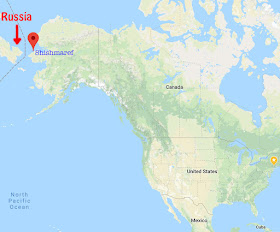 |
The population is about 95% Inupiak Eskimo with some non-native teachers from off island who work under contract at the school. The island was settled permanently about 100 years ago when the government built the school and post office. The Lutheran church came next and the formerly nomadic people, who previously roamed the interior and coastal areas, settled onto the island.
Shishmaref is the poster child for the Climate Crisis. It’s on the front lines of the battle for survival and is considered one of the most endangered places on the planet. Each year erosion takes 10 or more feet of its precious land. With melting permafrost and less sea ice providing a buffer, late season storms sweep off the Bering Straight and eat away the rocky shore.
Not only did the ice provide a buffer, but it also allowed for hunters in the village to travel by ice to their traditional hunting grounds in search of bearded seals and walrus. The loss of the ice is not only causing erosion of the land, but also the loss of the people’s subsistence lifestyle.
In the not so distant future the residents of the remote village will abandon their homes and become some of the world's first true climate refugees. In 2016 a slim majority of the residents voted to relocate the village to the mainland. According to the Alaska Corps of Engineers the cost of relocating the village would be about $180 million. The funds are not available and the move is pending.
|
 | ||
During a presentation at the Aspen Ideas Festival in 2017, Esau said,“We can not wait 10 years from now, five years from now, one year from now, or even tomorrow. We have to work on climate policy and climate change today. If we do not do something today than within the next two decades Shishmaref will be under water and I won’t have a home.”
Back home on the island, Esau looks out from a small eroding cliff facing the churning Chuckchi Sea. He says the land he is standing on now is what remains between his grandparents' tiny home and vast open ocean. Now says Esau, “My papa's house is the last one standing.”
During a storm the previous winter, Esau says, the waves actually splashed and reached over this cliff and hit the top of his grandparents' house. As a stopgap measure, many of the nearby small homes have been moved to the sheltered leeward side of the gravel island.
|










No comments:
Post a Comment